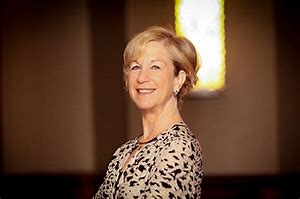My Perspective, April 2020: Business as Usual Has Left the Building


Spending hours (a lot of hours) with the people we are closest to and zero time with everyone else is one of a thousand things that seem out of balance in our new reality.
It isn’t easy to stifle fear and stoke the resilience, hope and creativity needed to be strong until we see the end of this challenge, but I have faith in the association community. Our leadership and our organizations are more important than ever. I know that all of you are focused on giving your best professionally and personally to the staff, volunteers and members who depend on you for guidance.
I’ve been writing and speaking about the need to prepare for disruption for several years. I thought that technology would probably be the source for the most sweeping changes to our industry. It turns out I’m wrong—at least for today. COVID-19 is a lesson in what we already know but, most of the time, choose to forget. There is no normal. The world changes on a dime in ways that are always surprising and often completely unexpected.
It’s impossible to prepare for every unpredictable event. But with innovation, mental agility and foresight you can survive and even succeed in the midst of disaster. The Association 4.0 books (Positioning for Success in an Era of Disruption and An Entrepreneurial Approach to Risk, Courage, and Transformation) that I wrote along with Kevin Ordonez were motivated by our interest in exploring how these qualities are being cultivated in the association community and what we could learn from people who strive to build the kind of adaptive cultures that thrive on change.
We interviewed 47 CEOs and entrepreneurs who are compulsive innovators, problem-solvers and builders. These are some examples of how our contributors prepared for obstacles and found opportunity in disruption.
Excerpts from: Association 4.0: An Entrepreneurial Approach to Risk, Courage and Transformation
Seize Opportunity

Kevin Hostutler, President, CEO and Co-Founder, ACGI Software (Chapter 9)
“On Friday the 13th of September 1996, a day I’ll never forget, my co-workers and I were called into a conference room and handed pink slips. My wife was expecting our third child in three years. . . The hardest thing I had to do was go home and tell her that I had no practical means to support our family.
“The next week my customers started calling. My business partner, Dan Kasprow, and I had been working on some large project implementations. Those clients hadn’t gone live yet, and they needed our help.
“One customer had a partially built membership renewal customization. All the organization’s cash flow was riding on bringing in those dollars by the end of the year. . . That association was just one of many organizations who had been abandoned by the company and were begging us for help. . . It took Dan and me eight business days to incorporate. A week later we were open for business. Dan was a bachelor, and we were working at his dining room table. Needless to say, that didn’t last long. With our first check we bought two laptops, and we rented an office. . .Twenty-three years later ACGI software is thriving and many of the customers who needed us back then are still with us today.”
Have a Vision

Roy Chomko, CEO, Adage Technologies, (Chapter 18)
It was 1999 and signs of recession were already surfacing. Then came the dot.com stock market crash in March of 2000, followed by the attack on the World Trade Center in September 2001.
Chomko and his partners had to decide how to position their company in a precarious economic and social environment. The group were divided on strategy, and Chomko and another like-minded partner split to start Adage. “We didn’t feel that the other folks were looking at the reality that 2001 was bringing”. . . We had a purchase order that was intended to keep us going for half a year. Just one month into the contract, the client called and said, ‘Rip up the purchase order and bill us for what we owe.’ Their stock had hit bottom, and the employees were all taking early retirement.”
Adage stayed afloat but continued to experience growing pains. . .“There were times, even during the first 10 years, when I thought if I had stayed in technology sales, I could have been making more money and working less,” says Chomko. “But . . . I believe that you need the persistence and patience to keep on working toward your goal, even when success seems illusive. Making money, for me, is secondary to wanting to innovate and create.”
Excerpts from: Association 4.0: Positioning for Success in an Era of Disruption
Think Boldly

Dawn Sweeney, former CEO, National Restaurant Association (Chapter 14)
In 2008, after 19 years of consecutive growth, the Great Recession hit the United States economy hard. Sweeney. . . understood that opportunity lay in helping the industry weather the storm.
Although membership grew during the recession as restaurant owners were searching for coping strategies, dues were not the answer to helping members or the association through the economic downturn. Sweeney understood that Instead of retracting during the recession, she had to be proactive and fill industry needs. Programs and services had to grow. Building on a firm base of existing initiatives, the association launched a health insurance offering customized to the restaurant industry, expanded its food safety programs, supported advanced credit card processing, grew the trade show, and engaged more actively in advocacy. The industry and the association emerged from the recession stronger than ever and have continued to grow. NRA increased its annual revenue from $50 million in 2007 to $116 million in 2016.
Be Adaptable

Peggy Winton, CEO and President, Association for Intelligent Information Management (Chapter 2)
“Digital transformation has so many meanings. . .People are viewing technology and its relationship to their work in totally different ways. Change and new business models are occurring in unexpected places,” says Winton.
AIIM had to consider whether its core services would become irrelevant. Leaders took a hard look at the technology landscape and their industry’s competencies. . .That journey led them to the decision that content is, and will continue to be, a significant component of digital transformation. However, the board and staff also realized that this was the optimal time to define their purpose in more holistic terms and to move toward an analytic, data-centric, and application-oriented approach.
AIIM used information-driven terminology to develop a road map for digital transformation. The process, which they call intelligent information management, provides a foundation to support additional layers of resources and technology. AIIM now has a set of tasks and strategies that will integrate successfully with emerging trends.
Our contributor’s stories illustrate the resilient, innovative approach needed to succeed in an environment characterized by rapid economic and social change. It’s a state of mind that recognizes opportunity, is inspired by vision, plans boldly and adapts with ease. These qualities are far more important than any technology, but they are also the characteristics that motivate people to use the powerful tools at hand with invention and creativity.
